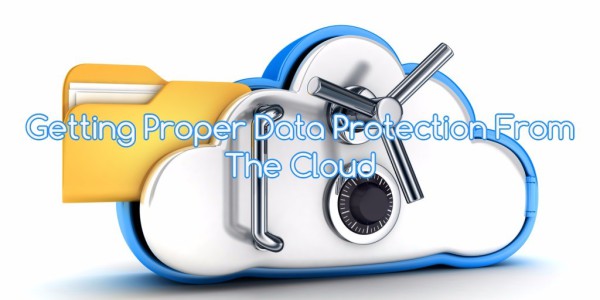Getting Proper Data Protection From The Cloud

Despite the fact that there is the presence of a cloud, there are organizations that are only just beginning to understand the level of the cloud that needs to be adopted for the needs of their businesses. Hybrid cloud models, for many businesses, are looking to be the favored approach when it comes to agility and the ability that they have to keep control of all of their sensitive information on their own premises. This approach is also used for the journey through digital transformation that quite a few organizations have begun or are about to begin.
In all truthfulness, while cloud technologies and virtualization have offered a wealth of fantastic new opportunities to boost agility and maintain uptime, there are quite a few things that will have the ability to trip you up. The first of these things is hypervisor portability. This is quickly followed by the challenges that hardware lock on brings about by appliances that are de – dupe and either make you add a gateway infrastructure or limit your cloud choice.

The challenge that is resented by VM sprawl and it vacuuming up a budget both in the cloud and on premise is significant. Providers of public clouds also tend to offer only replication and snapshot for protection and this simply doesn’t live up to the security you get with a point in time copy.
Businesses need a cost effective, highly scalable and holistic way to protect their critical data both in the cloud and on premise while also keeping an eye on their costs.
The cloud is assisting in the democratizing of data protection in several ways. For tier 2 workloads, there is the recover on demand DR and this can significantly reduce the cost of maintaining your own facilities for DR. Also, tools for VM conversion can allow businesses to ensure they are getting the right workload to the right cloud and avoiding issues with cloud lock in while boosting test processes and development.
When it comes to reverse DR, this utilizes an on premise infrastructure so that if there is a situation where the workload of a public cloud is compromised or if there is a major outage, the data is still secure. Management tools are also used to help in dealing with both public and private cloud VM sprawl.
Essentially, the cloud is a business enabler and leaders in the IT field are faced more and more with the conundrum of getting the most value from the act of cloud computing, while still making sure that the data is secure. In order to successfully profit from all of the things that cloud solutions bring to businesses, those organizations still need to pay very close attention to which data management tools they are using.
Storing and using large amounts of confidential or necessary data means that organizations need to ensure that they have a proper plan in place for data management…one that won’t lock them in with any particular cloud supplier. They should seek out an agnostic, scalable and holistic means of recovering, accessing and storing most of the business opportunities offered by clouds without having all of the risk.
Katrina is the resident how-to gal for RackSolutions visit her video series on youtube called ask Katrina
